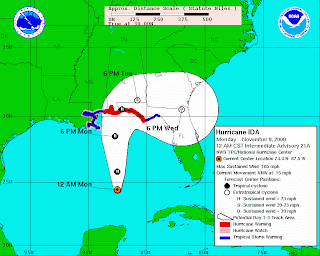As you may know from
reading this blog, oil prices look like they will trade as high as US$95 before year end which will result in OPEC increasing production at their next scheduled meeting on December 22 in Angola. In other words, oil prices will continue higher until OPEC increases output.
OPEC have a relatively small amount of spare capacity and so once these production increases are done we will eventually see US$100+ oil again before the end of 2010.
Oil began 2009 close to US$30 per barrel. We are now at US$80 per barrel due to fundamental supply and demand. Oil bears have been blindsided in the past by an over-reliance on easy (OECD) data and OPEC double-speak. To help these oil bears out, here is a quick guide to the language of OPEC:
OPEC: Speculators are causing higher prices.
Means: OPEC wants, needs and causes higher prices by cutting output and creating an oil supply deficit. OPEC is the only group of oil producers with spare production capacity and has co-ordinated control of over 40% of global oil output - currently worth around US$3 billion per day, or US$90 billion per month.
OPEC: We think prices at US$70-US$80 are fair.
Means: OPEC will not increase oil production until oil trades above US$90 per barrel. OPEC members' target is US$70-$80, which means OPEC will increase production when oil trades above this range (perhaps to US$85-$95) to allow for some slippage. OPEC members do not want to encourage consumer efficiency or risk another recession with US$100+ oil, which is a psychologically important level for oil consumers.
OPEC: We cannot find buyers for our oil.
Means: OPEC members almost can't believe consumers are buying this line...but it actually worked when oil traded above US$100 last year because OPEC members had run out of spare capacity and were unable increase production.
OPEC: We do not want to increase production while OECD inventories are at record highs.
Means: Don't look at non-OECD inventories which are falling due to rapid demand growth in the developing world. Why do you think oil has risen from US$32 to US$80 over the past 10 months? If OPEC can keep consumers focussed on OECD inventories this allows OPEC to blame speculators and say "OECD inventories are high...it can only be speculators bidding oil prices up."
OPEC: Floating storage of oil is at record highs.
Means: It used to be that floating tankers were expensive and only used for storage when land-based tanks were full. Now these floating tanker owners are in such a bad way with a glut of tankers available that they are directly competing with land-based storage even though there is plenty of land based storage available. OPEC needs to point to any full barrel or container as an excuse not to increase production.
OPEC: We have almost 6 million bpd spare capacity.
Means: OPEC members have 2.5 million barrels per day (bpd) of spare capacity. The global oil consumer called OPEC members' stated spare capacity bluff in 2008.













